The Path To New Leadership
Tuesday, May 8, 2018
By Bill Moran, Moran and Company
It is not easy to begin a nonprofit organization. A strong mission is critical but not enough to achieve sustainability. Most fail. Nonprofits that make it often have a “founder.” A founder has the passion, drive and ability to attract both volunteers and funding to the nonprofit. The nonprofit could not have made it without this person. However, at some point, this person moves into retirement or leaves for other reasons. So, now the nonprofit must replace the person who has been fundamental to the organization’s survival and success.
Here are some challenges and opportunities in replacing the founder:
Challenges
- The founder’s personality often is charismatic and has drawn volunteers to the mission. Therefore, volunteer engagement is dependent upon the founder. When s/he leaves, the nonprofit may lose a number of supporters.
- The image of the nonprofit is synonymous with the founder. He or she has been the face of the organization for many years. When s/he leaves, this image may be significantly diminished.
- The Board of Directors might be made up of individuals who have been picked by the founder and defer to his or her wishes. They may never have assumed their true governance role.
- Because the nonprofit is reliant upon one person’s decision-making, operations and programs may not adhere to best practices.
- The founder has often been key in fundraising, and so it may not be broad-based and professionally implemented. Fundraising will suffer in his or her absence.
- The founder may remain over-involved, and that involvement may undermine the work of the new Executive Director and hamper the organization’s growth.
Opportunities
- This is a great opportunity to move operations and programs to a much higher level. This is a chance to implement best practices and more effectively carry out the charitable mission.
- This is an opportunity to strengthen the Board. The Board can assume its proper governance role. It can recruit new members who provide important access to the community and its resources.
- This is an opportunity to diversify and professionalize funding. This will put the organization on a sustainable financial basis that will survive the “hand-to-mouth” environment that characterizes many young nonprofits.
- This is the time to say THANK YOU to the founder for the foresight to envision the organization and the moxie to stick with the nonprofit through adversity to sustain it.
Ultimately, every nonprofit must shift from “Founder Status” in order to move forward. This is not an easy transition. Conflict often arises as the founder and other early supporters resist change. On the other hand, the organization may struggle if the founder is pushed away.
Here are some steps for a successful transition:
- Assemble a strong Board Governance Committee with your best Board members. This committee, with Board approval, puts into place Governance Best Practices.
- Hire a nonprofit consultant who can serve as an “outside expert” to do Board development to improve governance. This may involve Board training and regular consulting until a new equilibrium is reached.
- Recruit new Board members in accordance with Best Practices in recruitment. These individuals should have significant nonprofit board experience to help guide the Board through this transition.
- Consider using an experienced, professional search firm that specializes in recruiting nonprofit executive leadership. It can guide the organization through this critical hiring process to identify its next leader while ensuring the best possible outcome.
- Hire a capable Executive Director who is given proper authority answerable to the Board. This Executive Director will be the first leader taking the reins from the founder. Board support for him or her is critical.
- The strengthened Board, Executive Director and founder should engage in strategic planning and agree on a strategic plan that outlines the organization’s direction. They should also agree on “core values” of the organization that will not change.
- The Executive Director and the founder must establish a relationship of trust. This is a critical relationship. They should have chemistry. The founder still has an important role to play. S/he is still needed to endorse the new leader, make introductions, and assist with fundraising and external relations.
- The founder may go on a six month to one-year sabbatical to give the nonprofit time to adjust his or her absence.
- Ultimately, the founder accepts a reduced but important role in the organization. The founder does not sit on the Board of Directors.
- The strengthened Board, Executive Director and strategic plan provide important new organizational underpinnings.
It takes great maturity on all sides for a successful transition. The founder must let go and allow his or her “baby” to move on to the next chapter or evolve in a new direction. The Executive Director and Board must understand the tensions the founder is facing and preserve core values (treasured by the founder) while they make needed changes.
The challenges seem big. Can it be done? Of course. Nonprofits successfully navigate the currents of change every day. Those with a transitioning founder must simply pass through this necessary stage of organizational development first in order to be better positioned to carry out their critical mission for years to come.


